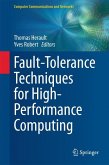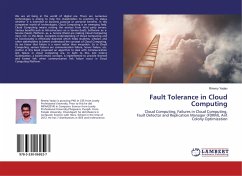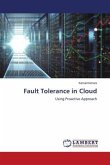
Broschiertes Buch
Restart, Rejuvenation and Checkpointing
2010
7. Oktober 2014
Springer / Springer Berlin Heidelberg / Springer, Berlin
978-3-642-43500-3
| Gebundenes Buch | 39,99 € | |
| eBook, PDF | 40,95 € |

Gebundenes Buch
Restart, Rejuvenation and Checkpointing
2010
6. Juni 2010
Springer / Springer Berlin Heidelberg / Springer, Berlin
12709847,978-3-642-11256-0
Broschiertes Buch
Fourth European Performance Engineering Workshop, EPEW 2007, Berlin, Germany, September 27-28, 2007, Proceedings
2007
Springer / Springer Berlin Heidelberg / Springer, Berlin
978-3-540-75210-3
| eBook, PDF | 40,95 € |
Ähnliche Artikel

Gebundenes Buch
Modeling, Evaluation, Applications
2008
2. Oktober 2007
Springer / Springer Berlin Heidelberg / Springer, Berlin
12071609,978-3-540-74172-5

Gebundenes Buch
1st ed. 2015
15. Juli 2015
Springer / Springer International Publishing / Springer, Berlin
978-3-319-20942-5

Broschiertes Buch
2. Juli 2024
tredition

Broschiertes Buch
Adaptable approach for dynamic environments
21. Juli 2011
LAP Lambert Academic Publishing

Broschiertes Buch
3. Juli 2013
LAP Lambert Academic Publishing

Broschiertes Buch
Cloud Computing, Failures in Cloud Computing, Fault Detector and Replication Manager (FDRM), Ant Colony Optimization
11. Mai 2017
LAP Lambert Academic Publishing

Broschiertes Buch
Softcover reprint of the original 1st ed. 2015
15. Oktober 2016
Springer / Springer International Publishing / Springer, Berlin
978-3-319-35560-3

Broschiertes Buch
Using Proactive Approach
10. Januar 2024
LAP Lambert Academic Publishing

Broschiertes Buch
7. November 2014
LAP Lambert Academic Publishing

Broschiertes Buch
Principles and Practice
2. Aufl.
7. Januar 2012
Springer / Springer Vienna / Springer, Wien
86035002,978-3-7091-8992-4
Ähnlichkeitssuche: Fact®Finder von OMIKRON
